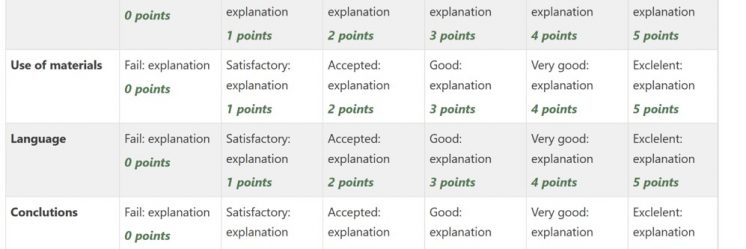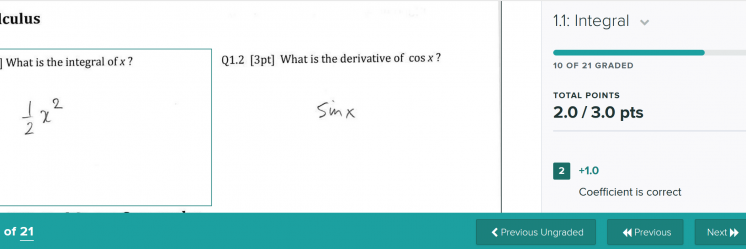Reflections on emotional intelligence in online teaching and learning

This post is inspired by a UNITE workshop on Emotional Intelligence in Remote Teaching and Learning held in April 2022 and facilitated by Isabel Gonçalves from the Technical University of Lisbon.
Teaching and learning are emotional activities – surprise, curiosity, joy, hope and a proud sense of accomplishment can be propelling factors for learning as well as a result of it. On the other hand, the learning setting can also evoke fear, anxiety, shame and frustration, because of poor balance in the level of difficulty of tasks and content or an overall threatening atmosphere.
Emotional Intelligence, sometimes referred to as EQ or EI, is a well-known, yet vague concept for many. Emotional intelligence is typically understood as being comprised of wellbeing, self-control, emotionality and sociability components and it can be defined as something that you do or as something that you possess.
Khan, Minbashian & MacCann (2021) state that “culture of different time periods is likely to produce generational differences in personality, similar to the way in which culture produces individual differences in personality between countries” and their research points to a decrease in Emotional Intelligence in the Western world due to rising individualistic values and self-focus. Social media might also play a role in emphasizing social comparison and replacing in-person interactions.
Nonetheless, or perhaps because of this, understanding the role of Emotional Intelligence in teaching and learning contexts remains important, not only as it supports effective learning experiences but also to nurture the wellbeing of those involved in the process.
Emotional Intelligence in Learning
Have you ever stopped to think what is the “atmosphere” of your classroom usually? Would you describe it as confident and inspiring? Safe and inviting? Passive and intimidating? Would your students describe it the same way?
The first idea when thinking of using EQ in the classroom can be one of a “naturally” charismatic teacher who is good at cracking jokes, has a refined social tact and makes casual talk with students. However, stemming from the understanding that emotional intelligence is also a skill and not exclusively a personality trait, it is possible to purposefully think and act in a way that advances EQ in one’s own teaching. A simple step to get started can be the recognition that emotions are integral to learning and that the teacher/student relationship is something to be developed and nurtured. Note that the emphasis on the teacher figure here is also key: the teacher is often the emotional “thermostat” setting up the mood and pace in a learning setting.
Online teaching implies that usual ways of regulating the emotional atmosphere in the classroom are not available. You cannot see the students’ expressions or follow how many side conversations the topic is generating. This also goes for the students who cannot see the confused, bored or excited expressions in their peers’ faces and use that to self-regulate and benchmark.
The emotional landscape in teaching can become very complex as we contemplate some practical issues that might commonly arise in higher education, like how to be attentive to emotions when they differ greatly between individuals and teachers are often interacting with very large groups? And how to find a balance between an empathetic attitude and a much needed professional distance in teaching?
While there is no set of go-to phrases and techniques or one-size-fits-all answers in the domain of emotional intelligence, it is possible to reflect on a few observations that might be useful in some contexts.
COMMUNICATION
- Mood checks and casual talk during and after lectures is not a mere amenity. It can be an insightful way to capture the emotional landscape that you are building among your students and can help you assess whether students are being led towards a state of passivity, intimidated anxiety or inspiring curiosity.
- Keep in mind that lectures are only one of the possible meaning points of contact with the learners. Maintaining an action/reaction logic inbuilt in the course and remaining responsive can help tackle the feelings of loneliness and isolation. Every response matter and can help create psychological safety. Try to be specific and empathize with your students whether it is replying to an email or talking through Zoom. Encourage sharing information.
FEEDBACK
- Written text can sometimes send wrong signals since it is lacking all the clues that are present in face-to-face communications, such as smiles, eye contact etc. Try to be specific and empathize and try using at some level emotional vocabulary such as “I’m comfortable with this and ready to proceed”. Keep in mind that feedback is also an opportunity to reframe the meaning of the learning experience.
LEARNING DESIGN AND MANAGING EMOTIONS
- Think about each element of your session also in terms of emotional activation and alertness and try to lean towards more alert and less negatively charged emotions (avoid fearful, overwhelming reactions). It might be difficult to assess or control these perfectly, but a little effort might have surprising consequences.
- There is a fine line between feeling challenged and feeling pressured. It depends on what the emphasis is: the label of a final grade or the exploration in the learning process.
- Students in online learning settings experience both positive and negative emotions about that context. The positive emotions can come from the sense of accomplishment of “getting things done”, and from the convenience of the flexible study arrangement along with the connections with other students. Negative feelings can be caused about not knowing enough about the course and the methodology – clear instructions and a transparent structure are extremely important.
PSYCHOLOGICAL SAFETY IN THE ONLINE CLASSROOM
- An essential factor of improving emotional intelligence in a class is creating a psychologically safe environment. Psychological safety is often understood as an ability to show and employ oneself without fear of negative consequences of self-image, status, or career [3]. You can help students and groups work better by creating an environment where they feel safe to ask questions, make comments, collaborate or express their emotions. Students need to know that they’re able to take risks.
- Many of us fear conflict by nature, because conflict can create a very negative atmosphere. However, there is “healthy” conflict, which focuses on a task and is not about people against one another. Conflict challenges the student to discuss what could be done differently, to defend their ideas and focus on the outcome. Discussion forums, for instance, are a simple way to create room for this.
- The online classroom should be as safe for you as it is for students. Trying something new should feel comfortable. You could encourage new ways of interacting or sharing information; consider adopting a chat in your course. When students feel that they are at the same level as the others (ponder the same questions) and feel safe with each other, it is easier to communicate and collaborate in the online environment.
Find out more…
[1] Khan, M., Minbashian, A., & MacCann, C. (2021). College students in the western world are becoming less emotionally intelligent: A cross-temporal meta-analysis of trait emotional intelligence. Journal of personality, 89(6), 1176–1190. https://doi.org/10.1111/jopy.12643
[2] Mortiboys A. (2012). Teaching with emotional intelligence: a step-by-step guide for higher and further education professionals (2nd ed.). Routledge.
[3] Kahn, W. A. (1990). Psychological conditions of personal engagement and disengagement at work. Academy of Management Journal, 33(4), 692–724. https://doi.org/10.2307/256287
Text: Silvana Perez Läherinta and Veruscka Xavier Filgueira

